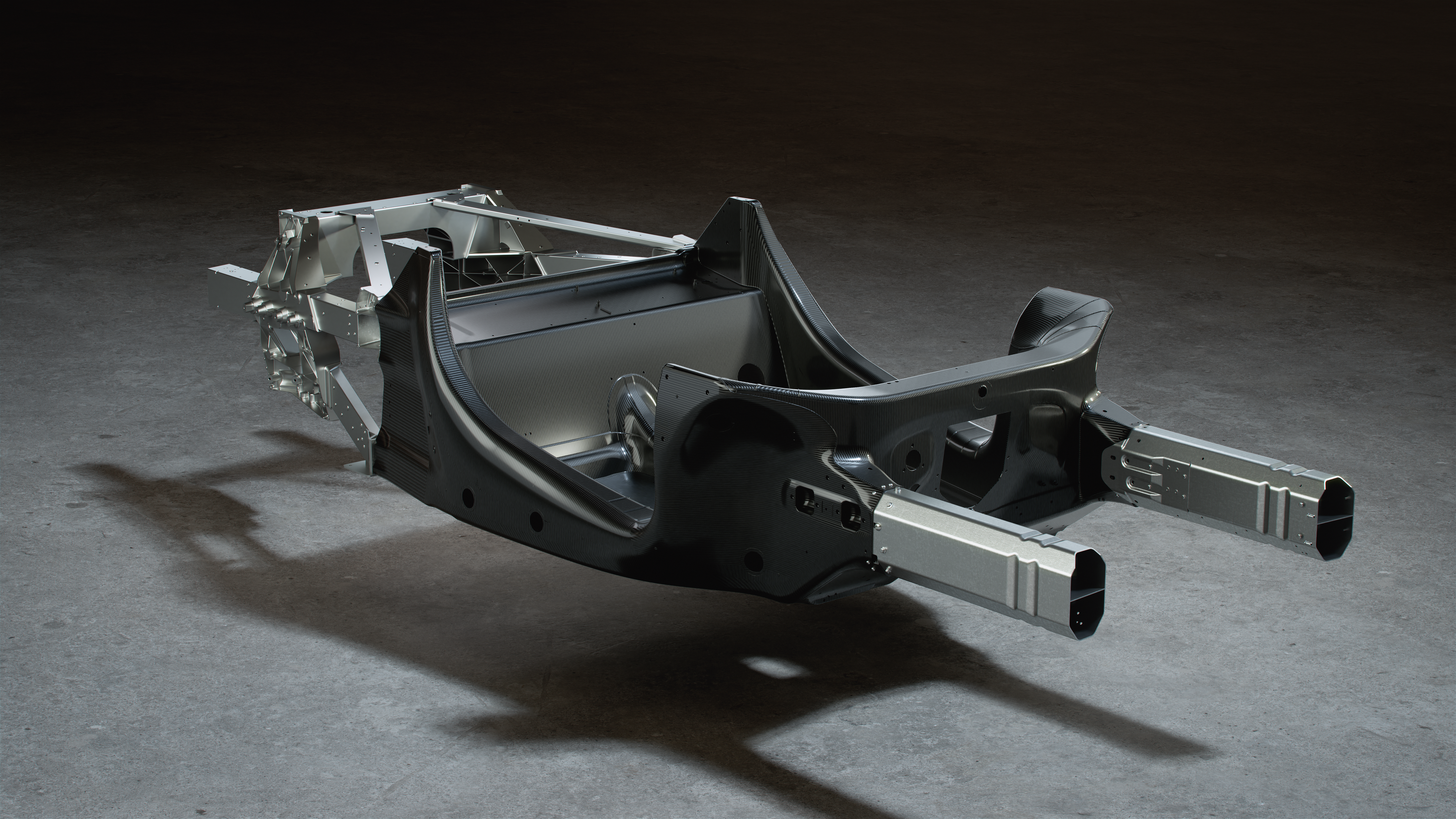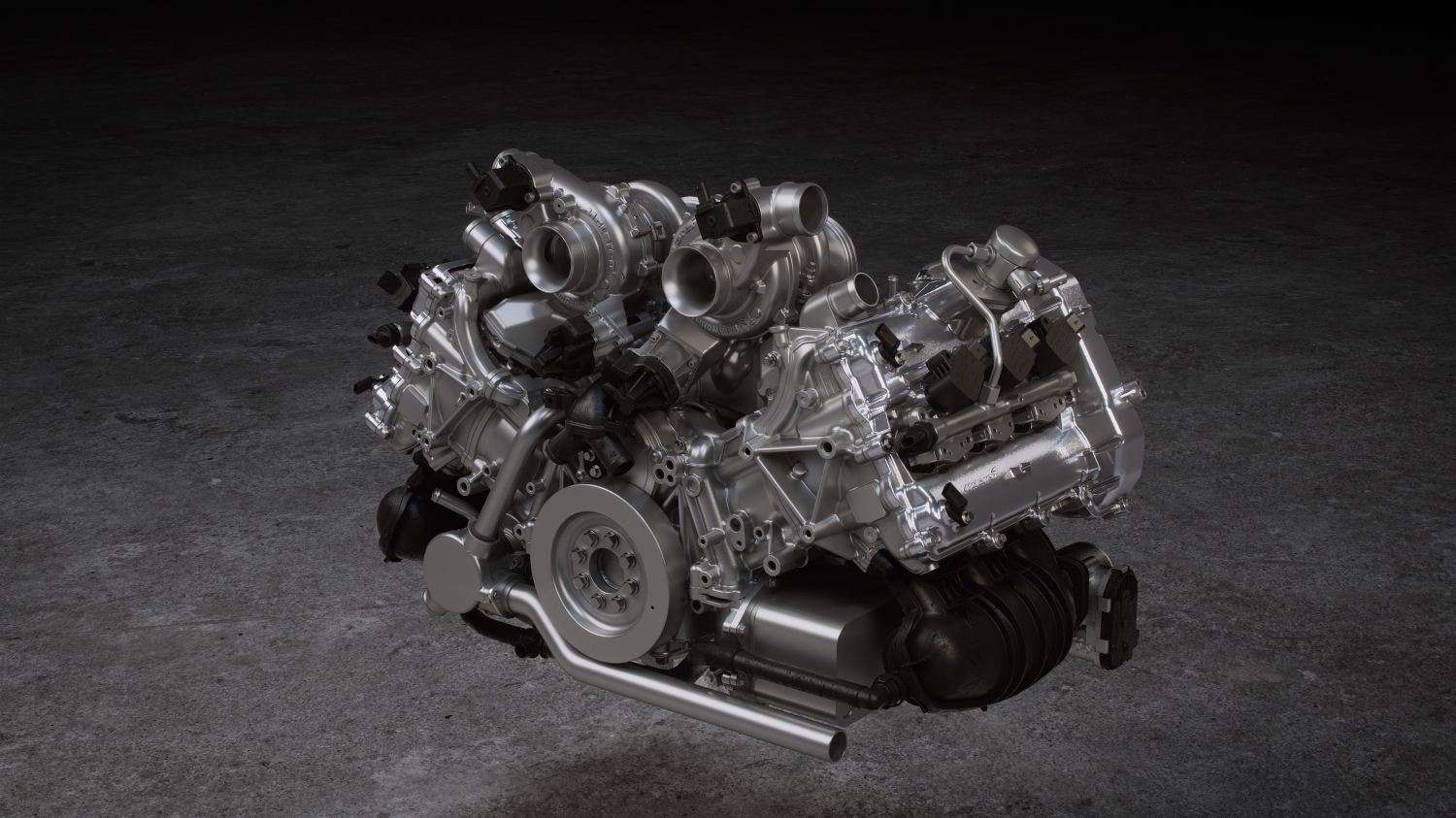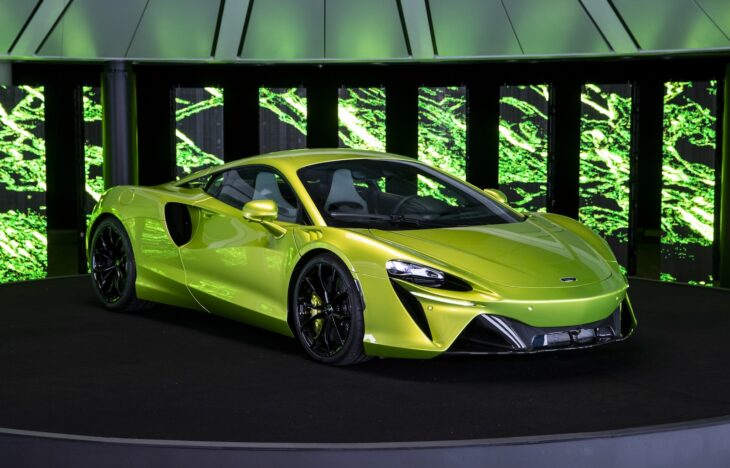The McLaren Artura is the brand’s first series-production high-performance hybrid vehicle. Inaugurating the new McLaren Carbon Lightweight Architecture (MCLA) that incorporates aluminum, it’s designed specifically to accommodate hybrid powertrains. With its super-formed aluminum and carbon fiber, McLaren was able to keep the Artura’s weight to a minimum despite having shapely proportions. The luxury sport car company used aluminum in many essential areas throughout the car’s design to meet its new standards for lightweighting.
Lightweight Architecture
The new architecture – called McLaren Carbon Lightweight Architecture (MCLA) – features three elements: an all-new carbon-fiber monocoque occupant structure, a new chassis with aluminum crash beams and rear subframe, and a first-to-market domain-based ethernet electrical architecture. The Artura is the first model to be built with the MCLA, which was uniquely optimized for High Performance Hybrid (HPH) powertrains and produced at the McLaren Composites Technology Centre in the Sheffield, U.K.

“The objective [with the Artura] was to add functionality and performance that comes from the HPH powertrain, but without the weight penalty you’d normally expect with that technology,” said Jamie Corstorphine, McLaren’s director of product strategy.
To achieve the very specific aims of the Artura program McLaren started right at the core of its new supercar, with a completely new carbon fiber architecture. This had to not only be true to the company’s conception of super-lightweight engineering for dynamic and performance reasons, but also crucially to offset the extra weight of a hybrid powertrain, as well as being tailored to accommodate the battery pack.
As a result, the Artura is the lightest in its class with a curb weight of just 3,303 lbs. The lightweight body is comprised of super-formed aluminum and carbon fiber and has perfect supercar proportions. McLaren’s form follows function design philosophy gives it a ‘shrink-wrapped’ pure and functional look. The lithe, technical sculpture has only minimal body shut lines and panel joints, assisted by features such as an entire rear clamshell engineered and super-formed as one panel. Accordingly, the shape of the Artura, sculpted to optimize performance and manage airflow for aerodynamic performance and cooling, is driven by the McLaren design principle of ‘everything for a reason’ that is evident throughout the car. As an example, the center of the front splitter acts as the intake for the eHVAC system and also houses the front-mounted radar that forms part of the optional ADAS package.
“The new McLaren Carbon Lightweight Architecture (MCLA) is quite literally at the core of the super-lightweight engineering philosophy that is inherent throughout the Artura,” said Jamie Corstorphine, director of Product Strategy at McLaren Automotive. “We developed this all-new, HPH supercar with all of our learnings from decades of working with advanced composite and other lightweight materials, using world-first processes and techniques to deliver weight savings that offset heavier hybrid powertrains, ensuring greater energy efficiency and maintaining the outstanding agility and dynamic performance our customers expect.
Aluminum Components Galore
At the heart of the Artura’s powertrain is McLaren’s all-new, 2,993 cc twin-turbocharged V6 internal combustion engine. With a power output of 577 bhp – nearly 200 bhp per liter – and 431 lbs/ft of torque, the dry-sump aluminum engine is compact and lightweight; at just 353 lbs it weighs 110 lbs less than a McLaren V8 and is significantly shorter, enhancing packaging efficiency. In addition, the Artura is designed with full Plug-in Hybrid (PHEV) capability and can be charged to an 80% charge level in just 2.5 hours with a standard EVSE cable. The batteries can also harvest power from the combustion engine during driving, tailored to the driving mode selected.
 “From the very beginning of the project, designing and engineering the Artura has been all about challenging ourselves to innovate, pushing and pushing to achieve everything we knew a next-generation, HPH McLaren supercar had to be, said Geoff Grose, Chief Engineer. “As a result, the Artura is all-new; the carbon fiber monocoque, electrical architecture and the body and interior are new. So too is the V6 engine, the transmission – which also integrates a new type of electric motor for the industry – as well as the rear suspension concept and our first-ever electronic differential.”
“From the very beginning of the project, designing and engineering the Artura has been all about challenging ourselves to innovate, pushing and pushing to achieve everything we knew a next-generation, HPH McLaren supercar had to be, said Geoff Grose, Chief Engineer. “As a result, the Artura is all-new; the carbon fiber monocoque, electrical architecture and the body and interior are new. So too is the V6 engine, the transmission – which also integrates a new type of electric motor for the industry – as well as the rear suspension concept and our first-ever electronic differential.”
According to the OEM, the supercar’s braking performance is also exceptional, thanks to the Artura being fitted with carbon ceramic brakes and lightweight aluminum calipers from the same family as the systems used in McLaren’s latest LT models. Together with the new rear axle kinematics, they deliver superior high-speed braking power and stability. To round out the generous use of aluminum, the Artura’s perforated cover over the back end is made of laser cut aluminum.
Flexible in the application, but physically incredibly strong, the Artura’s scalable platform architecture heralds the beginning of a new era of McLaren supercars. Befitting a car that is all-new and the distillation of more than half a century of McLaren’s knowledge and experience in race and road car engineering, the Artura introduces a number of technologies for which McLaren has patents pending. These include filings for multiple elements of the MCLA; a patent relating to the use of the E-motor in lieu of a mechanical reverse gear to enable rearwards travel and also allows gearbox length to be reduced; and a patent that covers the innovative yet refreshingly easy to use lightweight adjustment mechanism of the all-new optional Clubsport seat.
Available to order now from McLaren retailers, with first deliveries to customers commencing in Q3 of this year, the Artura is priced in the U.S. market from $225,000 for the standard specification, which includes the power-adjustable comfort seats, smartphone mirroring function, and a ‘Practicality Pack’ that includes vehicle nose lift, power folding and heated door mirrors, soft close doors, and Homelink on base models.

